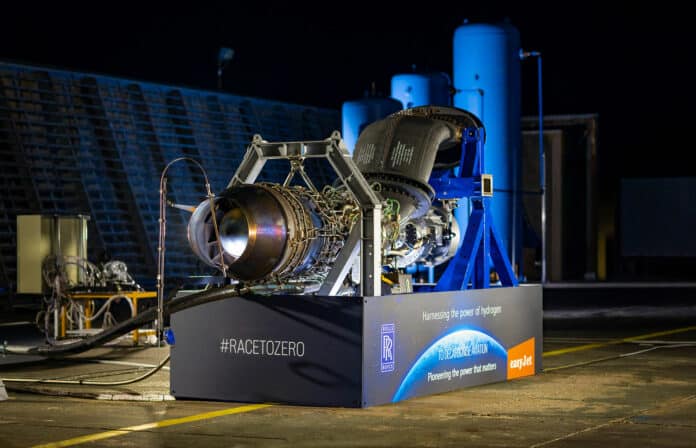Rolls-Royce and British airliner easyJet have accomplished the world’s first successful ground test of a modern aircraft engine powered by hydrogen. The ground test was conducted on an early concept demonstrator using green hydrogen created using renewable energy sources, such as wind and tidal power.
The experiment took place at an outdoor test facility at the Ministry of Defence Boscombe Down, U.K., using a converted Rolls-Royce A.E. 2100-A regional aircraft engine. The test marks a major step towards proving that hydrogen could be a zero-carbon aviation fuel of the future and is a key proof point in the decarbonization strategies of both Rolls-Royce and easyJet.
The green hydrogen was supplied by EMEC (European Marine Energy Centre), generated using renewable energy at their hydrogen production and tidal test facility on Eday in the Orkney Islands, U.K.
“The success of this hydrogen test is an exciting milestone,” said Grazia Vittadini, Chief Technology Officer, Rolls-Royce. “We only announced our partnership with easyJet in July, and we are already off to an incredible start with this landmark achievement. We are pushing the boundaries to discover the zero carbon possibilities of hydrogen, which could help reshape the future of flight.”
“This is a real success for our partnership team. We are committed to continuing to support this ground-breaking research because hydrogen offers great possibilities for a range of aircraft, including easyJet-sized aircraft. That will be a huge step forward in meeting the challenge of net zero by 2050,” said Johan Lundgren, CEO of easyJet.
Following analysis of this early concept ground test, the two partners plan a series of further rig tests leading up to a full-scale ground test of a Rolls-Royce Pearl 15 jet engine. The partnership is inspired by the global, UN-backed Race to the Zero campaign that both companies have signed up for, committing to achieve net zero carbon emissions by 2050.
